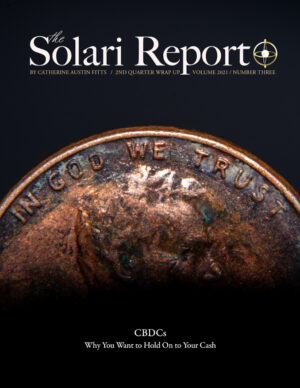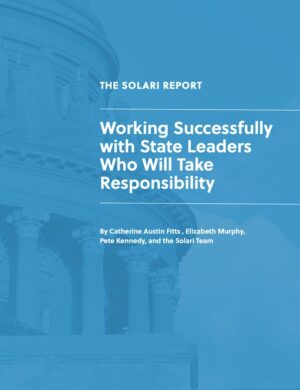In 1989, I was serving as Assistant Secretary of Housing. The housing bubble of the 1980’s had burst, and foreclosures were rising. The mortgage insurance funds of the Federal Housing Administration (FHA) were experiencing dramatic losses. We were losing $11 mm a year in the single-family fund. All funds had lost $2 billion in the southwest region the year before.
My staff and I did an analysis of what had caused the losses. What were the actions that we could take?
Fraud aside, the single biggest cause of losses in the FHA portfolio was a falling Popsicle Index – an index that we coined as a rule of thumb to express the health of the living equity within a place.
The Popsicle Index is the percent of people who believe that a child can leave their home, go to the nearest place to buy a popsicle, and come home alone safely. It’s an expression of the sense of intimacy and well being in a place.
Not surprisingly, there is a correlation between the financial equity or wealth in a place and the living equity or human and natural wealth. Where the people, living things and land are happy, businesses thrive, and the value of real estate is good.
Much as I tried, I found it difficult to interest anyone in a rising Popsicle Index. Countless petitioners made their way through my offices – mortgage bankers, homebuilders, realtors, low-income activists, real estate developers, tenants and city officials. Invariably what they wanted was for me to make a decision that would help them make money. Over time, I could tell what government actions would cause the stock market to go up and down by the flow of people and their various petitions. Meantime, I could not interest anyone in a rising Popsicle Index. They did not see how it could make them money.
It took many years of researching to realize what was going on in our financial systems to incentivize this behavior. In most areas of the world, places are organized by government and financed with debt.
Corporations are financed with both debt and equity. The key financial opportunity is in owning the equity. When profits increase or the perception of a company prospects improve, the stock goes up. Senior management and investors sell the shares, generating capital gains. Capital gains on stocks and real estate are primary mechanisms for creating financial wealth in our society.
As a result, corporations can make money exploiting people and places and their stock will go up. The “stock” of the place harmed will not go down; there is no ‘stock’ of the place. By centralizing our investment capital into large corporations, our financial interests are not aligned with the interests of the people and our natural environment
So what do we do? If we are to stop the financial drain on our families and communities we must change how we manage our own finances. Perhaps the way to begin is as permaculture teaches us – to listen and build out from natural systems which are, ultimately, the source of most of our wealth.
In every place, there are thousands of existing financial agreements, including laws and regulations that impact financial values. If we are to nurture and restore places, we are well served to listen to both natural systems and existing financial agreements, looking for ways of building new, fundamental alignments between land, people and their savings that reduce risk and optimize resources on an integrated basis. From years of studying the financing of places, I can assure you that those opportunities exist. Years of continuous learning, patience and collaboration will be fruitful.
In every place, people and local institutions have financial capital, typically retirement capital or various kinds of savings and reserves. Increasingly, this capital is invested through centralized institutions and financial centers.
Developing ways of creating sound investments to finance permaculture developments and the businesses that supply them would serve to spread the adoption of permaculture techniques. The more opportunities locally, or through decentralized networks, the easier it will be for people to withdraw their retirement savings from destructive systems.
The power of financially sustainable alternatives is that they help create a safe haven for billions of dollars that would like to leave more traditional investments but must have a place to go that is respectful of their precious savings and need for retirement income.
I am often told that financial tools are destructive and we should withdraw from them entirely. However, it is important to understand that millions of people have their life savings invested in that system. By choosing to not create sound, reliable alternatives, we ensure that their capital will stay invested in the old paradigm, financing destructive activities. Let’s find a way to welcome and protect their capital. Think of the potential allies we could make.
When we look at the flow of time and resources within a place where are some opportunities?
Small Business: Small business is the engine of a local economy. Look for ways to help local businesses attract and build talent and market products and services that increase local self- sufficiency. With the importance of agriculture increasing, this includes small farms too.
Government Resources: Centralization means that a greater portion of resources in a place are controlled by government, including the federal government. This money – as well as government regulations -often creates incentives out of alignment with the best interest of the local community and local natural resources. Concerted attention to understand government rules and regulations can produce opportunities for reengineering.
Distressed Assets: We are experiencing significant mortgage and other debt defaults as well as bankruptcies. Organizing ways to proactively help people harmed and reposition assets owned by distant financial institutions or government may represent an opportunity. Could these assets be “greened?”
Local Capital: Increasingly local investment capital is invested through Wall Street. Look for angel or other small investors as well as philanthropists who would be interested in creating ways to circulate more equity investment locally.
Strategic Partnerships: Every community can benefit from renewable technology and new skills. Look for ways to build linkages between a community and the enterprises and institutions that help create self- sufficiency. Such partnerships may also provide another opportunity for local capital.
Waste: Just as physical waste presents an opportunity for greening a community, so does financial waste. Study what is causing financial distress and look for opportunities to find solutions. For example, one of the biggest sources of financial waste comes from using a currency that is falling in value. Hence, the growing interest in community currencies and barter.
Align incentives: Increasing local equity investment means that investors can benefit from a wide variety of initiatives to lower costs and consumption, improve local business and markets and the flow of deposits, purchases and investments locally.
The idea of using the term Financial Permaculture to describe our efforts was coined by Thomas Hupp of the Leadership School as he, Jennifer Dauksha-English of the Center for Holistic Ecology, Greg Landau of the Ecovillage Training Institute, Carolyn Betts of Solari and I were brainstorming how to integrate Solari investment strategy with permaculture.
We decided the best way to create an integrated vision of natural and financial health within a place was to invite many more people into the conversation.
From October 24-28, with our colleagues Connie Sharp from the Sonnenschein Festival, Debbie Landers from Leadership Lewis and the team from GAIA University, we will gather with students and experts from across the country in Hohenwald, Tennessee for a five day course and simulation – Financial Permaculture: The Greening of a Rural American Community.
We would love for you to join us in the “invention room.” For more information and to register, see www.holisticecology.org.
Also see: The Farm Blog



 3rd Quarter 2020 Wrap Up: Visions of Freedom (104 pages)
3rd Quarter 2020 Wrap Up: Visions of Freedom (104 pages)  2nd Quarter 2020 Wrap Up: The Injection Fraud (132 pages)
2nd Quarter 2020 Wrap Up: The Injection Fraud (132 pages)  2021 Annual Wrap Up: Sovereignty (232 pages)
2021 Annual Wrap Up: Sovereignty (232 pages)  2nd Quarter 2021 Wrap Up: CBDCs - Why You Want to Hold On to Your Cash (144 pages)
2nd Quarter 2021 Wrap Up: CBDCs - Why You Want to Hold On to Your Cash (144 pages)  1st Quarter 2021 Wrap Up: Take Action 2021 (104 pages)
1st Quarter 2021 Wrap Up: Take Action 2021 (104 pages)  Working Successfully with State Leaders Who Will Take Responsibility (20 pages)
Working Successfully with State Leaders Who Will Take Responsibility (20 pages)  2nd Quarter 2019 Wrap Up: The State of Our Currencies (154 pages)
2nd Quarter 2019 Wrap Up: The State of Our Currencies (154 pages)
I’ve done an embedded PowerPoint Presentation on “Financial Tsunami vs. Financial Permaculture” which might contribute a holistic perspective on the causes / effects / possible solutions to the current crisis. Detail on blog http://www.sohominium.blogspot.com
Catherine –
The Blue Ridge Permaculture Network is in Charlottesville. Maybe you could bring the financial team to Virginia? I sent them a link for your event in TN. Here is the Blue Ridge link. http://www.blueridgepermaculture.net/permaculture.html
Bill Moyers featured UT Austin Economist Galbraith this week on his PBS Journal show. I have submitted a Journal feedback suggesting he interview Catherine Austin Fitts for the solution to the economy that is deeper and more transparent than his guest’s solution.
Regards,
Brad
Although financial dislocation often happens via the pull from a place like NYC or London, the Destruction of the popsicle index happens via local mechanisms, as well. I call it Commerce Distortion. It’s a part of human nature, something in our selves that is less than wholesome.
I used to live near a city center of a nice city in the southwest. This city had a land developer who had the town surrounded by holdings almost circling the existing city.
This developer often threw what I thought was insane amounts of money at the campaigns of a couple of Lawyers who in turn seemed to make the dumbest decisions as elected officials on the school board, that was in the city. I could not figure his angle. why was this guy openly throwing 100-200 K at a School board election?
Things seemed to go consistently, from bad to worse. You never heard good news about the city’s unified school district, in print, or on TV. The bad or negative news was too consistent, over decades. I don’t think the trend was something many people were tuned into. Who knows? Maybe the local paper editor got a 1/2 interest in a self storage unit for no money down…. Maybe it was all chalked up to “If it bleeds, it leads.”
All the outlying areas had smaller, separate school boards and don’tcha You know, they had superior schools.
Guess what? The outlying areas filled out faster than I could have imagined!
I submit we need to somehow get lots wiser than we are.
I have since learned of a superior education method that creates self taught students in half the time, children effortlessly transition from children to young adults, for about $200 for a K-12 education. It is self directed.
http://www.robinsoncurriculum.com/
When You figure out what it costs just in dollars to educate a child, You could have a home paid for for each child. Beside that, eliminating taxes for public schools would balance the economy and lessen the tendency for people to leave tax burdensome areas, which are often the oldest part of a community.
The other items impossible for me to score in terms of lost opportunity, is what cost are we paying for extending the term of childhood so much that a separate term, Adolescence had to be coined?
Those kids, milling around at the Mall, bored to tears, without direction, waiting to get out of a painfully boring dumbed down education environment: What does anyone expect will happen to them if they are left unattended? What cost are we paying for that? Someone a lot brighter than me has a clue.
http://johntaylorgatto.com/underground/index.htm (Free online book)
http://www.hardwickagriculture.org/industrialpark.html
Hi Catherine,
I don’t know if you are aware of these folks but it reminded me of you and our talk of going local.
http://www.hardwickagriculture.org/industrialpark.html
A plant based economy is what some of us at the GP are talking about, here is my latest note on the subject……
“I would adopt a policy of “Leave the oil in the soil”. Cynthia on oil independence.
“It also would offer incentives for alternative fuel vehicles.” Cynthia on alternative fuels.
The recent jump in gas prices due to hurricane Ike reminds us of the problem with a centralized energy system. The fuel shortages in the mid-70s were precipitated by a bulldozer in Libya accidentally backing into an oil pipeline affecting only 3% of the supply yet long lines at the gas pumps in the US ensued. That shows us how fragile the system is with regard to interruptions. Our fuel is produced in large quantities by only a few producers. But lets imagine for a moment what it would be like if there were thousands of small producers all over the country, at least one in each of the more than three thousand counties in this country. A storm would only disrupt the fuel production for that area, not the whole country.
The anti-alky propaganda has spit in the punch of a sensible solution and seems to have made Cynthia shy away from balancing her position on oil with a solid position on alcohol, the primary alternative fuel. It was the liquid fuel used before gasoline. People believe all kinds of myths about alcohol but the truth is it is clean fuel that produces no waste and done right, no pollution in its process. We stand on the side of truth. Any real plan for the immediate transition to sustainable renewable systems will have to include fuel for ICEs(internal combustion engines) because that is what people have. We will not be able to just junk that technology like an 8 track. We can insist everyone buy an electric car or take the train but that will take time and should be a priority for cities. Alcohol takes little infrastructure to move us into a clean more secure and decentralized system and I think done right could help build democracy. And it can be clean fuel for cooking, refrigeration, electricity generation and heating, as well if need be. In other words, we can begin to shut the fossil fuels cartel out of business. With such an alternative in hand we could make them stop topping mountains, stop drilling for oil offshore or in Alaska and stop making war to control access to oil.
A food/energy system based on alcohol would be a much more secure system as a decentralized system would be very difficult to shut down all at once. Of course, Barry Commoner did say “Its always possible to do a good thing stupidly” but even ADM has found that the benefits of alcohol production go far beyond the high octane fuel produced. The byproducts are worth more than the fuel, the proteins, vitamins, minerals and oils left over after the sugar and starches are removed has many uses. The CO2 from their fermentation process, instead of being bottled and sold to the soft drinks industry, is pumped into greenhouses that produce mature lettuce and English cucumbers in 30 days. Some the byproduct is traded for manure to make methane for process heat, returning it as fertilizer. Permaculture offers a myriad of sustainable choices for such a food/fuel production system. This has great potential for revitalizing rural communities who need to be able to produce their own food and fuel year around …if we are to leave the oil in the ground.
If we are to leave the oil in the ground
and have energy policy that is sound
one that the plain folk can understand
one they can see and soon have in hand
An alcohol still in every county in the land
and no more bloody wars on foreign sand
With local healthy food grown year around (cutting emissions way down)
we can bring a toxic polluting industry down
Hope all is well with you,
Howard Switzer, Architect
668 Hurricane Creek Road
Linden, TN 37096
931-589-6513
http://www.earthandstraw.com
Will you be publishing a copy of your lectures that you’ll be giving at the upcoming Permaculture Conference in October at The Farm? I would like a copy to report to my class. Thank you.
I am familiar with the concepts in two of the three pieces you mention (yours and Naomi Klein’s, both offering terrific insights into significant problems that must be addressed) and am looking forward to the third, however I still have not seen any evidence that the nature of the capital, rather than the intent of the capital, makes a difference in the outcome. Both types of capital expect a return, both may be laden with onerous requirements and both have no conscience of their own. One type expects a higher return than the other. The sources of the capital, be it debt or equity, and their goals, be they good or bad, is really where the issue lies.
It seems we do differ in that you seem to think that certain types of capital are nefarious by definition, and I think the people wielding the capital regardless of its form are really the heart of the issue.
Jeff:
We don’t seem to share the same paradigm about basic financial reality. The abstract is a useful place once we are grounded in a common set of facts and fact patterns.
So my recommendation would be to read Naomi Klein’s Shock Doctrine, Anne Williamson’s description of Russia privitization and my piece http://www.dunwalke.com and then let’s revisit the nature of economic warfare and go from there.
Looking forward to more conversation,
Catherine
Catherine,
Thank you very much for your reply and your thoughts on this issue. I really appreciate all you have been doing to facilitate this vital conversation.
It seems that the viewpoint that debt is somehow less likely to create alignment between investor and investee than equity depends on a few factors.
First, the assumption that equity is somehow morally superior to debt as debt has been used for “control and slavery” ignores the fact that those capital structures quite often had equity as well as debt in them. The barbarians at the gate in your referenced site (www.dunwalke.com) used both. Slaves can be bought and sold with money that is obtained via debt or equity. The source of the cash matters not to the slavetrader. It is access to, and control of, capital in whatever form that allows for control. You are correct. Debt can indeed be used for nefarious purposes in any number of ways. Covenants can be controlling, debt service piled on to drive firms into the arms of unwanted suitors, etc. However, equity can be used for all the same nefarious goals.
Second, you are also correct that those who create access to capital outside of the controlled channels do indeed threaten the status quo power structures. However, there are more and more institutions masquerading as acceptable to the status quo acting as Trojan horses all the time. Access to and control of capital are critical to the success of the sort of businesses we all would like to see succeed, regardless of the type of capital. Yet research shows that these businesses have less access to capital, in either debt or equity form, than their non-sustainable, non-local rivals for investment dollars due to a number of reasons (http://www.ecosacapital.com/cleantech-vc/). Of course, none of these reasons have anything to do with the profit potential of the businesses in question, but far more with the fact that they upset the status quo and are outside the comfortable, clubby atmosphere where most investment dollars flow to investments led by people already part of the club. That club can be the technorati on Sand Hill Road, the masters of the universe on Wall Street, the hedgies in Greenwich or any other place where capital is collected and controlled.
Third, both debt and equity can be in alignment with investor and investee, or they can be in fundamental mis-alignment. There is nothing in their inherent structures that make one any more aligned than the other. As a lender, just like an equity investor, certainly I want my investees to succeed so I can get return of my lent capital and interest and reinvest it. How many tech start ups have had the experience of Silicon Valley VC’s using equity investments as a means to replace founders with friends willing to do their bidding, force strategic changes on founders and management, and use that equity investment as a defensive measure to protect other investments by forcing a wind up are myriad. In my practice, I have had any number of conversations with the founders of sustainable, ethical businesses around their capital structures. Not once has one founder or manager expressed a concern that taking on debt would force them to lessen their dedication to doing the right thing by their stakeholders or the natural world. However, every one of them has expressed concerned that receiving an equity investment could put their vision of an ethical enterprise at risk, as now there are additional shareholders to please.
Personally, as our family is the sole equity holder in our agricultural business, we can choose to be happy with a 3-4% return on our equity. How many outside equity investors would be happy putting their money completely at risk in our business for a return they could get in a CD? Also, if we took outside equity capital, we might be forced to increase use of harsh chemicals, increase pollution in groundwater by using more soluble nitrates, or move away from our commitment to organic agriculture to increase short term yields to satisfy the return expectations of an equity investor. If that equity investor wants out, we might be forced to wind up or put at risk our business to pay him or her off. Will the next owner be as good a steward? If we take debt on, all we need to worry about is the debt service.
When it comes to local economies, it seems as if determining the alignment of investor and investee is far more important than the actual type of capital used. Debt from a place like Shorebank Pacific (www.ecobank.com), New Resource Bank (www.newresourcebank.com) or RSF Social Finance (www.rsfsocialfinance.org) among many others is often quite well aligned with the investee’s goals and values. Local revolving loan funds, microcredit and other debt types are well aligned with their investees. Heck, my plain vanilla line of credit at my local bank is not mis-aligned with my values or goals. Equity from the wrong person or institution can be mis-aligned. It seems that capital, be it in the form of debt or equity, can be in alignment or out of alignment. There seems to be nothing inherent in one form or the other that makes it so. Instead it is matching the goals and morals of the investor and investee, be it a debt or an equity investment, which makes for alignment.
However, one thing that debt does by design is continue the constant flow of investment dollars. An equity investment may be returned with profit or as dividends, allowing it to be reinvested. Equity investments may also simply be held, or accumulated, allowing vast pockets of wealth and control to be built. In those cases, the cash is no longer flowing, no longer being useful in building new enterprises. Debt is designed to be repaid in a constant fashion, allowing that cash to be used over and over again. There is a case to be made for resource efficiency here. It is not a case that debt can not be used for negative control, any type of capital can accomplish that “goal.” Rather the case is that debt more closely mimics the way nature works. Resources in nature are not accumulated, they are borrowed, used and returned to the ecosystem. The hydrologic cycle and the food web are wonderful examples. There is no lack of diversity in the way debt investments can be structured.
Lastly, many sermons against debt are really against usury. This difference is a subtle but important one. In Islamic banking Murabaha, the Islamic practice of cost-plus, Bai’ Bithaman Ajil, the deferred payment sale, or Bai’ Al-Inah, the practice of sale and buy-back, are all essentially debt vehicles. In Christian circles, there is legitimate debate over the term usury and whether it means the charging of any interest or the charging of immorally high interest. Generally today, we take the lessons to mean “do not take advantage of those who borrow from you.” When looking at the risk/reward continuum, it seems that the returns expected by the equity investor are often more akin to usury than those of the debt investor.
As stated above, there are as many opportunities for debt to be aligned, or mis-aligned, as there are for equity investments. More importantly are the goals, motives, morals and ethics of the parties involved in the transaction.
Catherine
I have been reading with interest your thoughts over the past few years, and find myself agreeing with much of what you discuss. I figured it was time to enter the discussion myself.
I saw your posting on financial permaculture, and am glad you wrote it. This concept is one I have been examining for quite some time, particularly the point you make around equities.
“It took many years of researching to realize what was going on in our financial systems to incentivize this behavior. In most areas of the world, places are organized by government and financed with debt.
Corporations are financed with both debt and equity. The key financial opportunity is in owning the equity.”
I’ve been working on some thoughts comparing natural systems to financial systems, and would like to trade some of these ideas with you. Particularly the role of debt versus equity. It seems the ideas may be useful in the conversation around financial permaculture.
In general, it seems that a goodly portion of the function of financial markets is the “goal” of accumulation. Obviously, therefore it seems to follow that one particularly potent form of accumulation is equity. Cash, the lifeblood of enterprises large and small, is tied up directly (accumulated) in equity issues traded on public exchanges, or more importantly indirectly accumulated in mutual funds and other secondary or tertiary financial vehicles. The corporation or small business sells the share one time, receives cash in return to finance the business, and the resultant share is traded, taking cash out of someone’s pocketbook to purchase it. The amount of cash tied up in these issues, essentially doing nothing to finance economic activity but just parked there, is staggering. Cash in equities is not being recycled, it is not flowing. Debt, on the other hand, allows cash to flow constantly.
A financial system based more on flow than on accumulation has its roots in ecology. As noted green architect and ecological designer Sim Van Der Ryn says in his book Ecological Design, in natural systems, form often follows flow rather than function. The flow of glaciers created the form of Yosemite. The flow of the Colorado river created the form of the Grand Canyon. Even the pathways of many modern country roads follow the original flow of game trails.
Why is flow important and accumulation potentially risky? In natural systems, an accumulation of something, even something good, is often the death of the system. Even in our bodies, certain vitamins or minerals neccesary for life can choke off the life of the system if they accumulate in too high of quantities. Wetlands offer nature’s own water treatment facilities for some of even the most noxious of run-off, but if too much accumulates, the wetland stagnates. In natural systems, standing still or accumulating can kill the system. The system must flow in order to thrive.
If natural systems must have continual flow, does it then follow that financial systems must also? If we take the current system, with its goal of accumulation, to its illogical end, we can see that cash will accumulate in the hands of the few. Your writings show this end result quite clearly. Even in local economies, taking cash in return for equity in a small business clearly ties up cash from flowing to others over time. It seems the more the system focuses on equity, the more likely it will suffer from arterial sclerosis of cash flow. Eventually, this lack of constant flow of cash can lead to the deterioration of an economy, be it local, regional, national or transnational, but it is especially important at the local level, as non-local actors play a larger and larger role in the financial system.
It seems debt more appropriately matches the example of natural systems than equity does. Debt is a form of constant cash flow. In a debt driven system, money flows constantly from one entity to another, never accumulating too long in one spot. If the cash is not flowing, it is not earning a return, therefore the incentive in a debt driven system is constant reinvestment. It seems that a system driven by debt, especially in local economic systems, by mimicking nature’s focus on flow, creates a more stable system.
In a non-local, unstable system with equity as a large component, risk is often completely mispriced. Non-financial means of risk mitigation are often completely overlooked. This factor is particularly relevant at the local level. A handshake over coffee between friends or family is often stronger collateral than any physical property. Reputation, history in the community and interlocking relationships play a much larger role in risk mitigation than financial engineering, so debt instruments can and should be priced accordingly.
What about the idea of investors requiring increasing return for increasing risk? Isn’t that a case for equity? Simply because equity returns have been used as the example of the higher returns required farther up the risk/reward continuum, must equity be the only tool that can provide such returns? There are any number of ways debt, and debt-like, instruments can provide the higher return required for higher risk ventures. It only takes a bit of creativity to come up with them. Once the fallacy of equity=high return is laid to rest, the entire risk/reward continuum can be managed with debt and debt-like instruments. These sorts of investments are particularly important in local, family owned businesses who do not want to give up equity, but in which investments require a higher return due to truly increased risk.
Equity seems to be detrimental to the health of a flowing economic system. A system based on debt seems more bio-mimetic, as there is little accumulation in nature. Rather cash should flow just like water in a rivercourse. If we want to develop an economic system that is more in tune with nature, more suitable for protecting our world, than shouldn’t we use the examples nature provides us as lessons on how to build that system? Ecosystems and economic systems share many traits. Interconnectedness, reliance on the meshing of disparate parts of the system, complexity and many other traits are shared by the two. Yet, we’ve managed to develop an economic system that follows none of nature’s rules. No wonder the system is sclerotic.
Just some thoughts I felt obliged to share. Feel free to contact me to explore these thoughts in more detail. I’d love to know how to help in these issues in some way.
Warm regards,
Jeff Steen
Catherine’s reply:
Jeffrey:
This is a much longer conversation — one I would welcome having publically through the blog. Feel free your post and my answer to post there.
Debt creates fundamental non-alignments between borrower and lender.
Consequently, it has been a primary mechanism for control and slavery, particularly when combined with covert operations and insider financial engineering. This is why Islam and Christianity and numerous other religions sermonize and have rules against debt, albeit often not followed. Recently, debt has been a primary mechanism for centralizing control. See http://www.dunwalke.com
Equity aligns investor and investee — they succeed and fail together.
This promotes a much higher learning metabolism and much greater collaboration on risk.
Hence, significant effort has been expended to make sure that equity can not circulate locally between small business and small investors (http://www.dunwalke.com), thus ensuring their dependence on debt and retained earnings.
It seems to me that nature loves diversity. Hence a system with robust options, transparency and continuous learning is best. Let the system optimize in complex or simple ways as it wishes. The problem is not that we use debt. The problem is that people who create free access to capital, particularly equity capital, without going through controlled channels live in physical danger.
Watch the movie Syriana. Great description of the real problem,
Catherine
Critics are the Best Customers.
– That’s what sensible business people say. So here are my criticisms.
#1. Everything seems to cost a fortune, so poor people can’t participate in all this stuff. $500 is way over my head. Catherine’s seminars seem to be generally awfully steep too. How about letting people barter or give volume discounts or something? What good is all of your knowledge, if the people who need and want it can’t afford it?
#2. Although I think there’s valuable info in permaculture and environmentalism, as I’ve been an environmentalist since 1970, the movement is essentially controlled by our ruling class. The CO2-caused global warming scare is ludicrous, when it’s clearly the solar cycle, maybe with help from HAARP and chemtrails, that drives the climate. The ruling class is a bunch of white racists who want to prevent useful technology, like modern industry, from getting into the hands of poor countries. The hysteria against nuclear power originates in the same place. I’m ashamed of most fellow environmentalists who don’t want poor countries to have modern industry. If they’re so concerned about human and animal life, why do they never investigate the health threats from cell phones, HAARP, chemtrails, etc? My contention is that we can have clean modern industry that brings prosperity to everyone. Solar and wind energy can’t hold a candle to nuclear energy. It was Margaret Thatcher’s administration that started pushing the CO2-caused global warming hype in 1979. It’s taken her successors this long to get many scientists on board, via control of grants and especially control of the news media, including science news media. Why do progressives [liberals] trust what the news media say about global warming, but they don’t trust the same media on Iraq? The same media that own Fox owns all the satellite channels, like The Science Channel, The Discovery Channel etc, where I see a constant barrage of hype about global warming, with no equal time given to scientists who disagree.
– I have no problem with disagreements, but it should be obvious by now that it’s naive to ignore those with alternative views, or simply call them derogatory names.
I think the substance of this article is great but the first two sentences have me confused. Can someone clear it up for me. The author says that “In 1989, I was serving as Assistant Secretary of Housing. The housing bubble of the 1990’s had burst…” So in 1989 the 1990’s bubble “had” burst? How had the bubble of the 1990’s already burst in 1989? Does she mean in 1999 she was serving as Assistant Secretary of Housing?
I would like to share this article with others but I want to get some clarity on, what to me is, the date confusion.
Thanks!
Sally
Errata: Original quote should have read, “In 1989, I was serving as Assistant Secretary of Housing. The housing bubble of the 1990’s had burst, and foreclosures were rising.”
Hello Catherine,
“In 1989, I was serving as Assistant Secretary of Housing. The housing bubble of the early 1990’s had burst, and foreclosures were rising.”
How about rephrasing the quote above as, “In 1989 I began serving as Assistant Secretary of Housing. In the early 1990’s the real estate bubble that then existed burst, and foreclosures were rising.”
You might also want to use a real world example of a fraudulently induced loan, such as the field worker who made $17K/yr, but got approved for a $700k loan.
The reason for sending this is the following link. http://calculatedrisk.blogspot.com/2008/09/were-all-fraudulently-induced-now.html
For the record I like your popsicle index.
Regards,
KW
Very thought provoking. Let me tell you how frustrating it is when the State of NC awards $20M to Google to build a data center while at least 50 small companies with data centers already are struggling within the state. I believe one aspect of the engineered-economy which you did not highlight is the USA governments at national, state, and county levels are flat out sold out to business interests. The American people are trading short-term security for their financial – and personal – freedoms. Consider the H2A (agricultural worker) visa revisions as an example. President Bush directed for a more stream-lined process. The result? A more costly and longer process which makes small farmers take on heavy expenses and, thus, directly rewards the corporate farms and makes H2A workers all but unattainable for individual farmers.